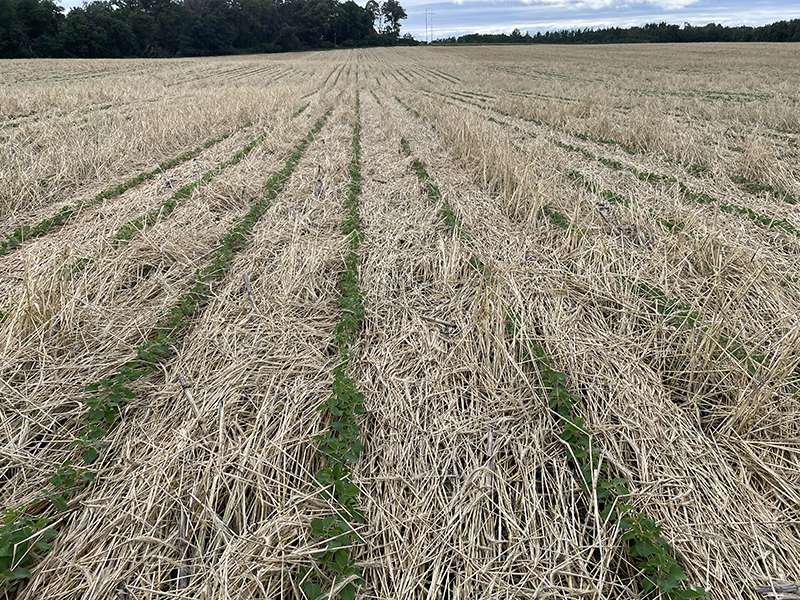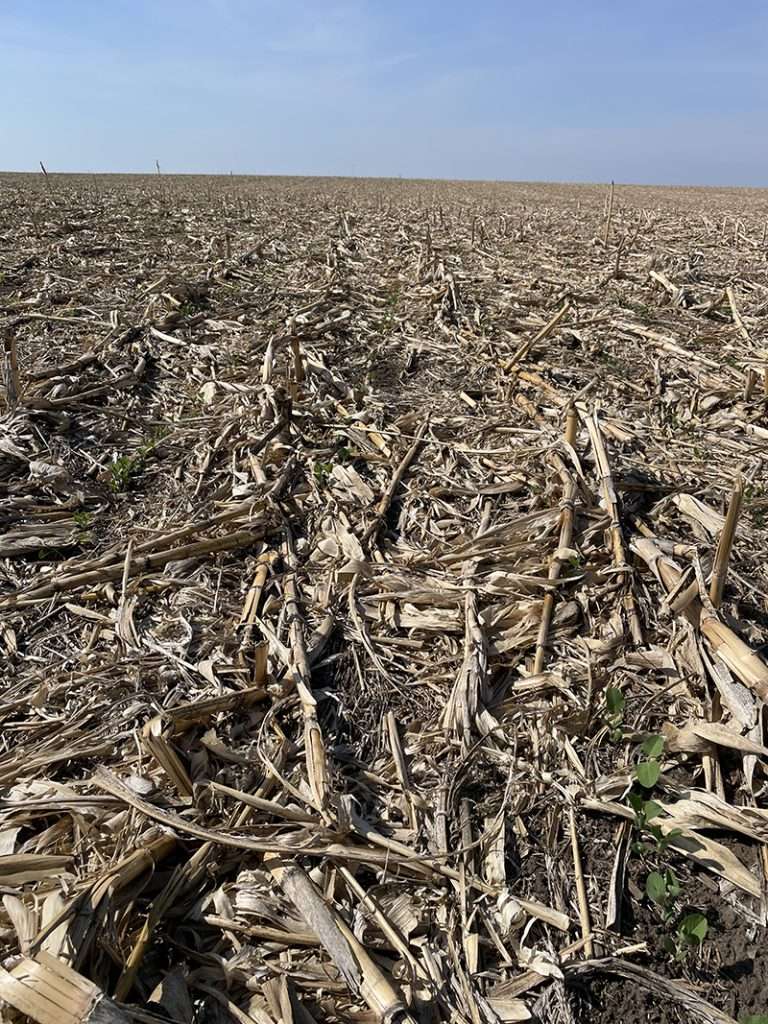by Ethan Begle
Do you plant in wet soil in the spring, or is it usually too dry? When it’s wet, it’s tempting to scratch the surface with vertical tillage to dry the top out. Then another rain shower comes and it’s soft and muddy which delays planting even longer until you can get equipment back out to till it again so the mud dries. Each of these passes creates more compaction because you are destroying the pore size of the soil. Spiked closing wheels do just enough tillage after the seed has been placed to dry out the soil above the seed encouraging oxygen exchange.

If you maintain cover from last year’s crop residue, you will more often fight too much moisture at planting. What does too much moisture mean? Standing water is obvious, but with heavy equipment, it means getting through the field without making tracks in the soil. Without residue covering the soil, you will find mud. The pictures and videos showing planters clogged with mud have one thing in common: they lack a barrier between the mud and the equipment. We’ve all tried to swing the planter out into that troublesome wet spot, trying to get something growing to shade out the weeds. Coulters and row cleaners move this barrier and allow your planters units direct access to the mud underneath. Keep the soil covered! If there is consistently too much water standing in the field, planting a cover crop will provide the root structure and residue barrier needed to keep equipment out of the mud. You want to keep all the moisture locked in the soil now so it’s there when the crop really needs it, late in the summer at grain fill. One last concern in wet soils is when it’s late spring and the cover crop gets too mature. It’s no longer pulling lots of moisture from the soil, and it’s too tall, shading the ground from drying out on top. This is when wider spacing (>10”) between cover crop rows provides room for sunlight to reach the soil. Use the planter sitting in the shed, even if it’s on 30” rows.

If you feel like planting conditions are often dry and you average less than 20” of rain yearly, you will also need last year’s residue to keep moisture in the soil all summer. Any exposed soil will bake in the sun until crop canopy. The best way to get enough residue cover is with a healthy, yielding crop from the previous year. A higher yielding crop will make a big difference in the amount of residue left, and the more residue in the field, the more nutrients can be released the following crop year as the residue breaks down. I’ve seen fields where the residue blows more easily, but there is a correlation to that crop’s health and how that residue stays anchored to the soil. It’s been said before by others, but the best thing for your soil is a high-yielding previous crop that gives lots of residue to keep the carbon cycle continuing. Dry environments benefit from leaving crop stubble standing all winter to prevent rapid breakdown, and then at planting, roll the residue down to start the breakdown process and let the biology release nutrients for the growing crop. Preserving residue after harvest on dryland fields is why it’s hard to see seeders running at an angle to the rows, flattening all that precious residue. One misconception I’ve learned is not trying to save money by not tilling but rather spending those dollars on fertility to make the crop healthier. A healthy crop at harvest will give you residue that stays in place all winter and doesn’t blow away. A healthy plant will be higher yielding and photosynthesize larger amounts of root exudates to feed the biological battery in the soil.
The overarching theme of course, is healthy plants growing every day of the year. Leave the residue in place and let the underground livestock do the work. Dry areas should do everything necessary to preserve residue and keep the soil covered. Grow more residue when it’s needed on fallow ground. Use wider rows or index your planting right between old crop rows to keep fields undisturbed. Cover crops don’t have to be waist-high and planted super thick to serve their purpose. Use low populations and wider rows to reap the benefits while leaving some fallow space in between rows. Grow more grass crops (cover or cash crops) that have high Carbon to Nitrogen ratio so the residue will last. Water always ends up being a yield-limiting resource, it just depends on the time of year, so do your best to save it when it’s needed most.
